
The Enchanting Isle of Skye: A Journey Through Nature's Masterpiece
Discover the Isle of Skye: An island of rugged beauty, rich history, and vibrant culture, offering unforgettable experiences and adventures amidst Scotland's stunning landscapes.
The Isle of Skye, located off the west coast of Scotland, is a haven of breathtaking landscapes, rich history, and vibrant culture. Known for its rugged coastlines, medieval castles, and quaint villages, this picturesque island captures the hearts of all who visit. The scenery is dominated by the Cuillin mountain range, which offers some of the most challenging and rewarding hiking experiences in the UK. The dramatic cliffs, serene lochs, and lush valleys make every turn a potential postcard moment. The island's history is as captivating as its landscapes. From the storied Dunvegan Castle, the oldest continuously inhabited castle in Scotland, to the mysterious Fairy Pools and the ancient brochs, Skye is steeped in legends and tales of yore. Visitors can explore the heritage of the clans that once ruled these lands or stroll through the charming streets of Portree, the island's largest town, which offers a glimpse into the daily life of the islanders. Skye is also a paradise for wildlife enthusiasts. The island is home to a variety of species, including golden eagles, red deer, and seals. Whale watching tours are also popular, providing an opportunity to see these majestic creatures up close. The island’s natural beauty is complemented by its vibrant arts scene, with local galleries and craft shops showcasing the work of talented artists inspired by their surroundings.
Local tips in Isle of Skye
- Check the weather forecast before hiking; conditions can change quickly.
- Visit popular sites like the Fairy Pools early in the morning to avoid crowds.
- Book accommodation well in advance, especially during peak tourist season.
- Try local seafood delicacies in Portree for an authentic taste of the island.
- Rent a car to explore the island at your own pace, as public transport is limited.
The Enchanting Isle of Skye: A Journey Through Nature's Masterpiece
The Isle of Skye, located off the west coast of Scotland, is a haven of breathtaking landscapes, rich history, and vibrant culture. Known for its rugged coastlines, medieval castles, and quaint villages, this picturesque island captures the hearts of all who visit. The scenery is dominated by the Cuillin mountain range, which offers some of the most challenging and rewarding hiking experiences in the UK. The dramatic cliffs, serene lochs, and lush valleys make every turn a potential postcard moment. The island's history is as captivating as its landscapes. From the storied Dunvegan Castle, the oldest continuously inhabited castle in Scotland, to the mysterious Fairy Pools and the ancient brochs, Skye is steeped in legends and tales of yore. Visitors can explore the heritage of the clans that once ruled these lands or stroll through the charming streets of Portree, the island's largest town, which offers a glimpse into the daily life of the islanders. Skye is also a paradise for wildlife enthusiasts. The island is home to a variety of species, including golden eagles, red deer, and seals. Whale watching tours are also popular, providing an opportunity to see these majestic creatures up close. The island’s natural beauty is complemented by its vibrant arts scene, with local galleries and craft shops showcasing the work of talented artists inspired by their surroundings.
When is the best time to go to Isle of Skye?
Iconic landmarks you can’t miss
Dunvegan Castle & Gardens
Discover the enchanting Dunvegan Castle & Gardens, a historic gem of Scotland's Isle of Skye, revealing centuries of clan heritage and stunning natural beauty.
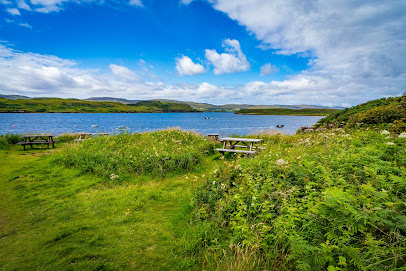
Sligachan Old Bridge
Discover the enchanting Sligachan Old Bridge, where stunning mountain views and rich Scottish history blend seamlessly in the heart of the Isle of Skye.
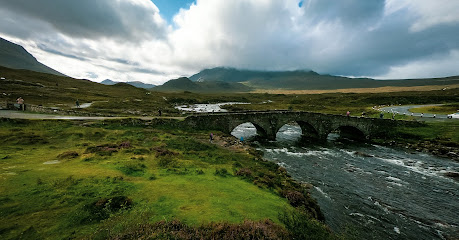
Neist Point Lighthouse
Explore the breathtaking Neist Point Lighthouse on the Isle of Skye, a stunning landmark offering spectacular views and rich wildlife experiences.
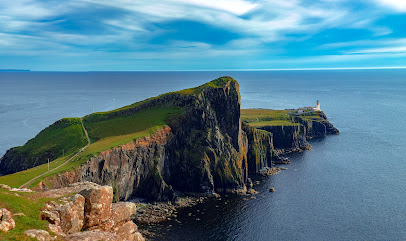
Armadale Castle, Gardens & Museum
Discover the beauty of Armadale Castle, Gardens & Museum on the Isle of Skye – a perfect blend of history, nature, and culture.
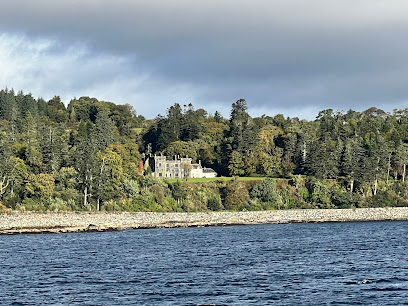
The Lump
Discover The Lump in Portree: Where Breathtaking Views and Scottish Charm Await You on the Isle of Skye.
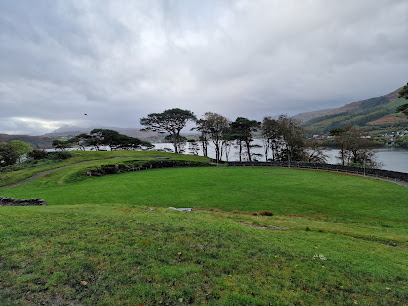
Rubha Hunish
Discover the breathtaking landscapes and rich history at Rubha Hunish, the northern tip of Skye—ideal for hiking and nature enthusiasts.
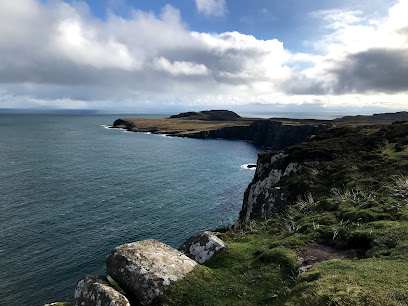
Neist Point Cliff Lighthouse Viewpoint
Explore the stunning natural beauty and historic charm of Neist Point Lighthouse on the Isle of Skye, a must-visit for nature lovers and photographers.
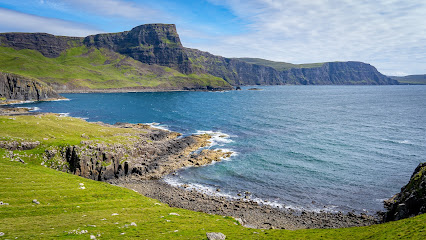
The Brother's Point
Explore Brother's Point, a mesmerizing coastal gem on the Isle of Skye, boasting stunning cliffs, breathtaking views, and rich Scottish folklore.
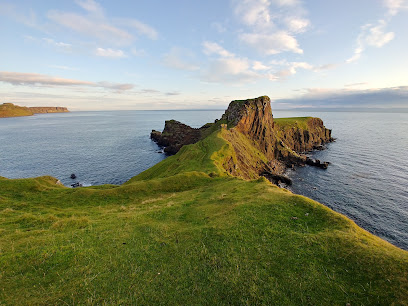
Dunscaith Castle
Discover the enchanting ruins of Dunscaith Castle on the Isle of Skye, a historic gem surrounded by breathtaking landscapes and rich Scottish heritage.
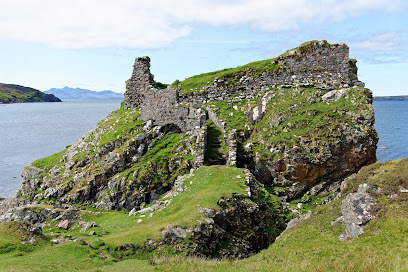
St. Columba's Isle
Explore St. Columba's Isle, a historic landmark in Skye, rich in heritage and natural beauty, perfect for travelers seeking adventure and tranquility.
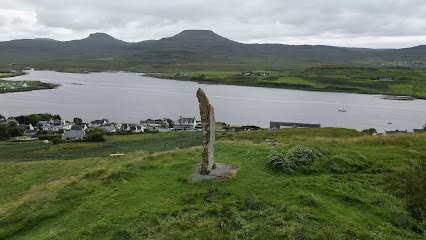
Old Ruins
Discover the Old Ruins of Portree: A Historical Landmark Where Nature Meets History on the Isle of Skye.
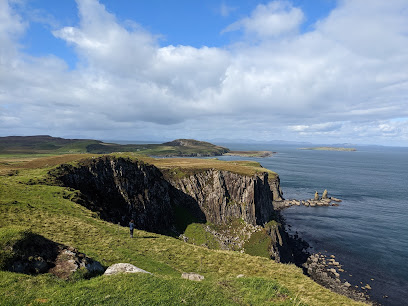
Clachan Erisco Standing stones, Borve, Isle of Skye
Explore the haunting beauty of Clachan Erisco Standing Stones on the Isle of Skye, a historical landmark rich in mystery and ancient Scottish heritage.
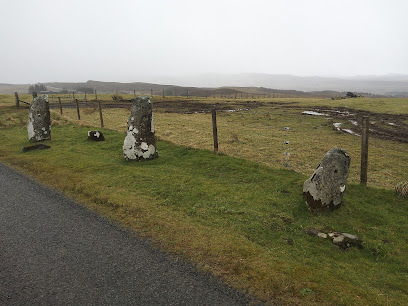
Dun Osdale
Explore the captivating historical landmark of Dun Osdale on the Isle of Skye, where nature meets Scotland's rich heritage in stunning landscapes.
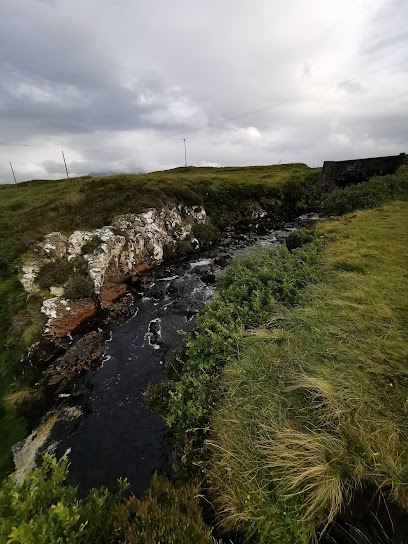
Ardmore Arches
Discover the historic Ardmore Arches, a stunning landmark featuring breathtaking views and rich cultural heritage on the Isle of Skye.
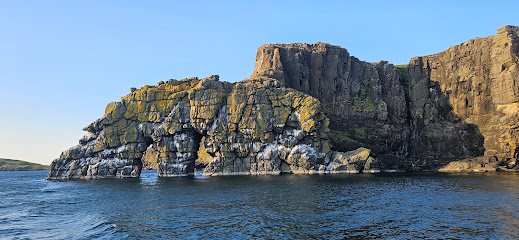
Kylerhea Minor Lighthouse
Explore the scenic Kylerhea Minor Lighthouse on the Isle of Skye, a historical gem offering breathtaking views and a touch of maritime heritage.
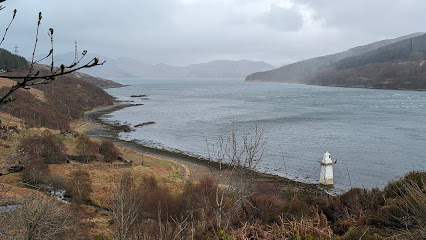
Unmissable attractions to see
An Corran Beach
Discover the stunning An Corran Beach in Portree, a perfect blend of natural beauty and rich history on the Isle of Skye.
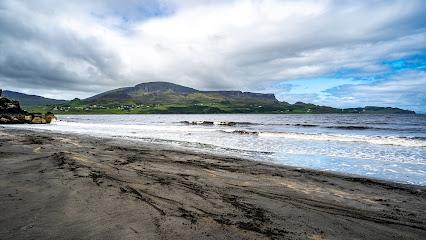
Isle of Skye Candle Co. Visitor Centre
Explore the Isle of Skye Candle Co. Visitor Centre, where the art of candle-making meets the stunning natural beauty of Skye's landscapes.
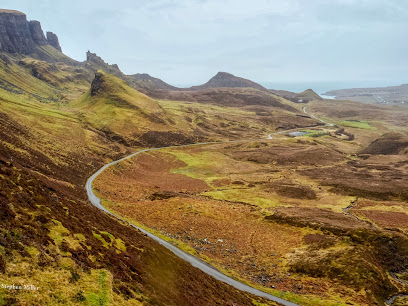
An Corran Beach
Discover the breathtaking beauty and historical significance of An Corran Beach, where ancient dinosaur footprints and stunning landscapes await every traveler.

Rigg Viewpoint
Explore the breathtaking vistas of Rigg Viewpoint on the Isle of Skye, where stunning coastlines and serene waters await.

Talisker Bay Beach
Experience the stunning beauty, dramatic cliffs, and serene atmosphere of Talisker Bay Beach on the Isle of Skye, a true Scottish gem.
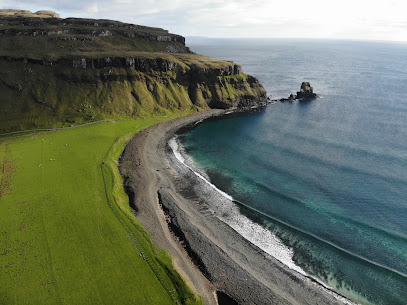
Castle Ewen
Discover the enchanting Castle Ewen in the Fairy Glen, a breathtaking natural attraction on the Isle of Skye, perfect for nature lovers and photographers alike.

Rubha Hunish
Discover the breathtaking beauty and rich history of Rubha Hunish on the Isle of Skye, a must-visit destination for all nature lovers.
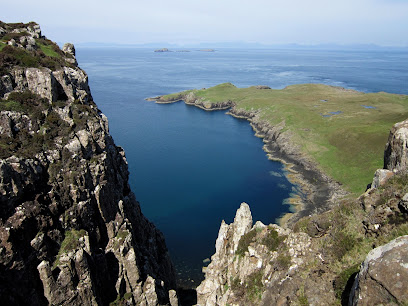
Caisteal Maol
Discover the historic charm of Caisteal Maol, a captivating castle ruin on the Isle of Skye offering breathtaking views and rich Scottish heritage.
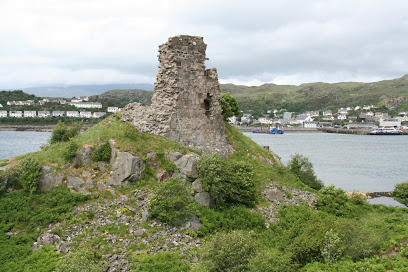
Neist Point Cliff Lighthouse Viewpoint
Experience the stunning coastal views and rich maritime history at Neist Point Cliff Lighthouse, a must-visit attraction on the Isle of Skye.
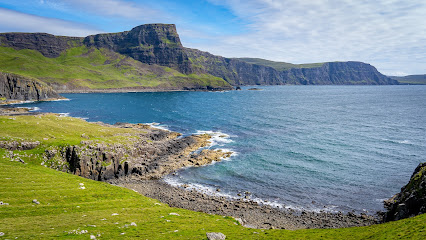
Spar Cave
Explore the enchanting Spar Cave on the Isle of Skye, where stunning coastal views meet fascinating geological wonders in a serene setting.

Otter Hide
Explore the scenic beauty and wildlife of Otter Hide on the Isle of Skye, a perfect destination for nature lovers and outdoor enthusiasts.
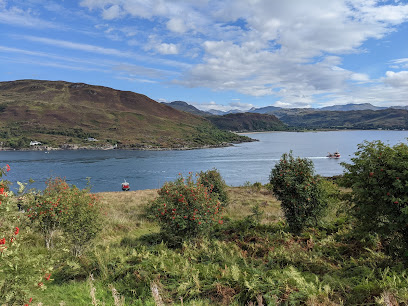
The Brother's Point
Experience the breathtaking landscapes and rich wildlife at Brother's Point, a stunning natural attraction on Isle of Skye, perfect for photography and exploration.
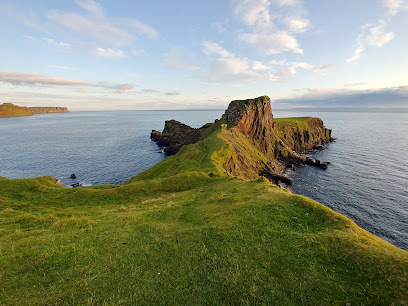
Colour House Viewpoint
Discover stunning vistas at Colour House Viewpoint, where colorful harbor houses meet breathtaking landscapes in Portree, Isle of Skye.

An leth-allt view point
Discover the stunning vistas of An Leth-Allt View Point, a premier destination for breathtaking views and unforgettable memories on the Isle of Skye.
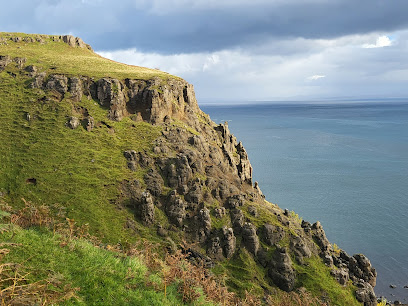
Giant Angus MacAskill Museum
Explore the Giant Angus MacAskill Museum in Dunvegan, Isle of Skye, and uncover the fascinating story of the world's tallest giant.
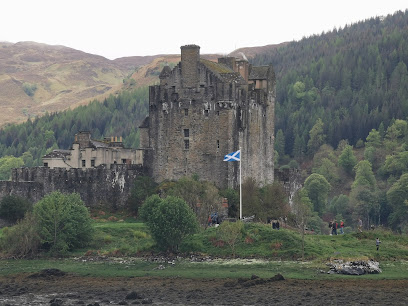
Essential places to dine
Old School Restaurant
Discover Old School Restaurant: A Seafood Paradise on the Isle of Skye Offering Fresh Flavors & Unforgettable Dining Experiences.
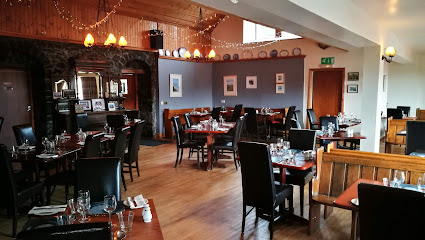
Seumas' Bar
Experience authentic Scottish cuisine at Seumas' Bar on the Isle of Skye—where local flavors meet stunning views.

Claymore Restaurant
Experience authentic Scottish seafood at Claymore Restaurant on Isle of Skye – where every dish tells a story of coastal heritage.

The Legend of Saucy Mary Restaurant
Experience delightful British cuisine at The Legend of Saucy Mary Restaurant in scenic Kyleakin on the Isle of Skye.
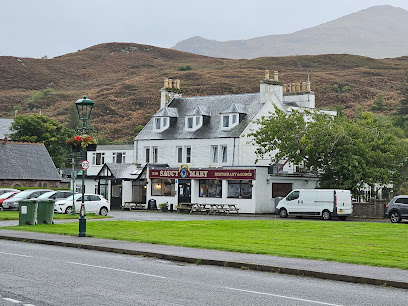
Cuchullin Restaurant
Experience authentic Scottish cuisine at Cuchullin Restaurant in Portree—where tradition meets breathtaking scenery.

Sea Breezes
Experience exquisite seafood dining at Sea Breezes in Portree, where fresh flavors meet stunning harbor views.
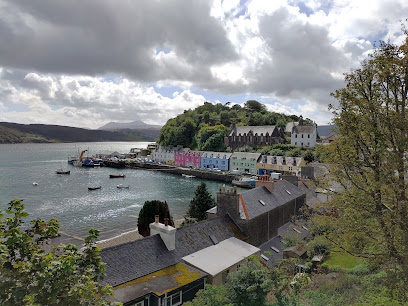
Taste of India, Kyleakin
Experience authentic Indian cuisine amidst the stunning scenery of Isle of Skye at Taste of India in Kyleakin.
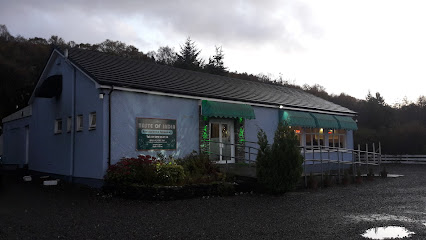
The Three Chimneys and The House Over-by
Discover exquisite Scottish cuisine at The Three Chimneys on Isle of Skye, where local flavors meet stunning views for an unforgettable dining experience.
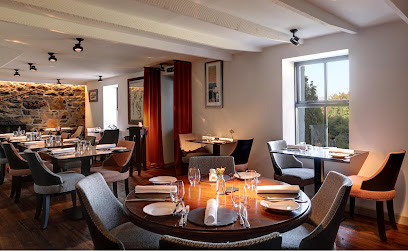
Red Skye Restaurant
Experience exquisite seafood dining at Red Skye Restaurant on the Isle of Skye, where fresh flavors meet stunning views.
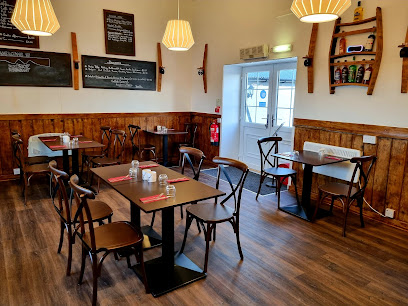
Castle Moil Restaurant
Discover exquisite seafood dining with breathtaking views at Castle Moil Restaurant in Kyleakin, Isle of Skye – a true culinary delight!

The Caledonian Cafe
Discover local flavors at The Caledonian Cafe in Portree, Isle of Skye—where delicious breakfasts meet delightful ice cream treats.
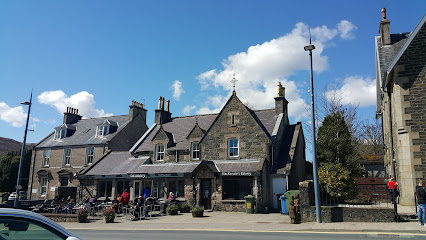
The Dunvegan, Isle of Skye
Discover culinary delights and cozy lodging at The Dunvegan on the beautiful Isle of Skye – where every meal tells a story.
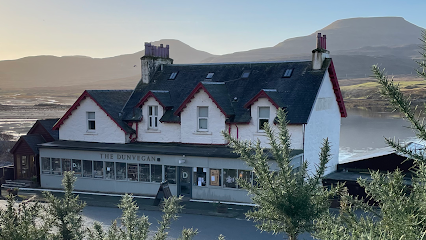
Loch Bay Restaurant
Experience exquisite seafood dining amidst breathtaking coastal views at Loch Bay Restaurant on the Isle of Skye.
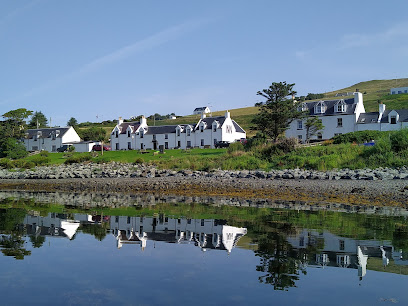
Scorrybreac Restaurant
Experience exquisite small plates at Scorrybreac Restaurant in Portree - where local flavors meet innovative cuisine.
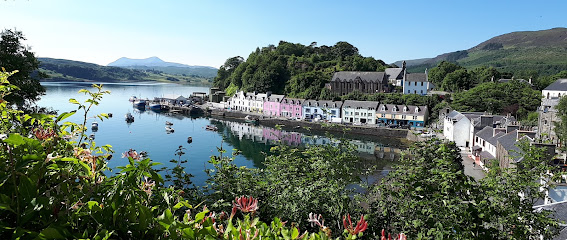
Gasta Port Righ
Discover Gasta Port Righ: A top-rated restaurant in Portree offering exquisite local dishes amidst stunning Isle of Skye scenery.
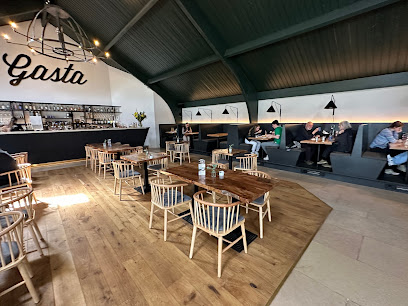
Markets, malls and hidden boutiques
Fasgadh Stores
Explore the charm of Fasgadh Stores, a quintessential general store offering local produce, souvenirs, and everyday essentials on the Isle of Skye.
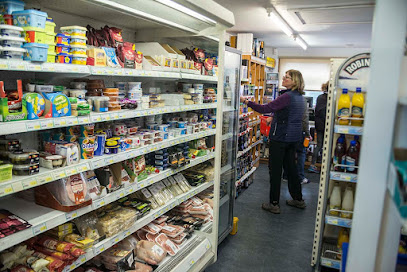
Skye Batiks
Discover handcrafted fashion and artisanal crafts at Skye Batiks, a must-visit shop in Portree that showcases the beauty of Scottish artistry.
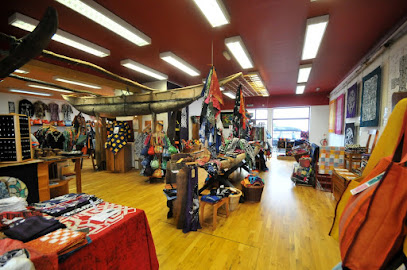
Isle of Skye Distillers
Explore Isle of Skye Distillers for a taste of exceptional local gins and whiskeys, embodying the spirit of Scotland's breathtaking landscapes.
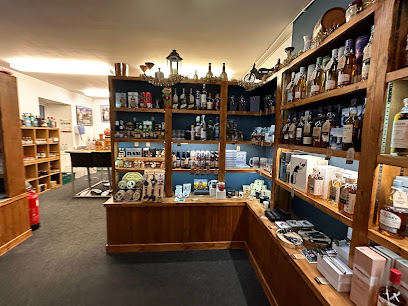
Isle of Skye Crafts @ Over the Rainbow
Explore the enchanting Isle of Skye Crafts in Portree, where local artistry and handcrafted treasures await every visitor.
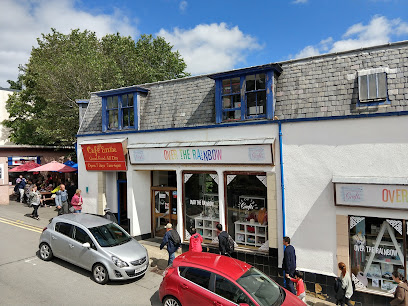
ÒR
Discover unique handmade jewellery and crafts at ÓR, a top destination in Portree, Isle of Skye, reflecting the essence of Scottish artistry.
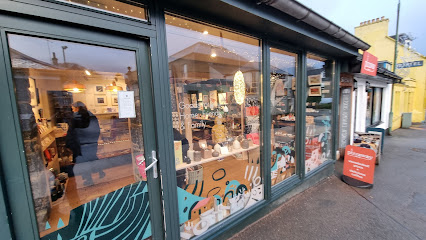
Skye Antiques
Explore Skye Antiques, a treasure trove of unique antiques and collectibles in Broadford on the stunning Isle of Skye, Scotland.
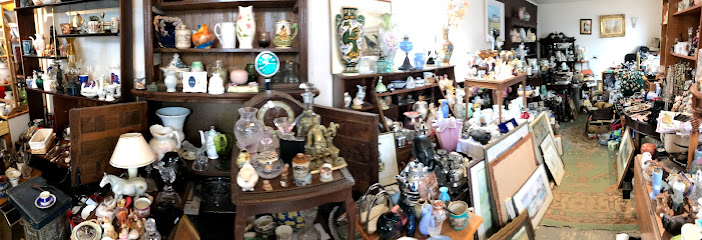
The Blue Skye gift co.
Explore The Blue Skye Gift Co. for unique Scottish souvenirs and local artisan crafts on the stunning Isle of Skye.
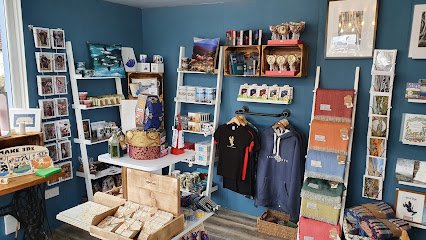
Lou Lou Designs on Skye
Explore unique artisan crafts at Lou Lou Designs on Skye, a charming shop showcasing the creativity and beauty of the Isle of Skye.
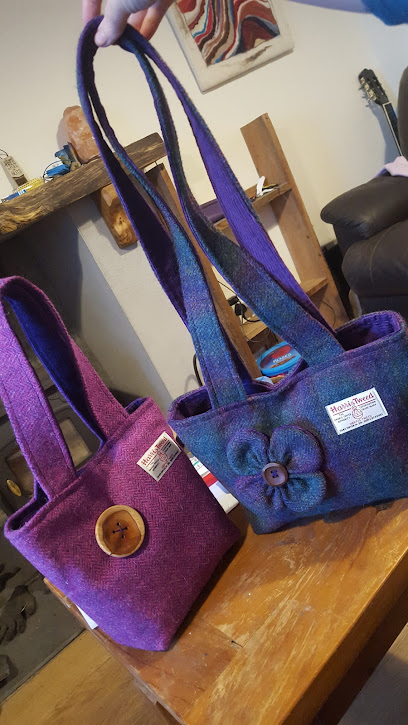
Tippecanoe
Discover unique souvenirs and local crafts at Tippecanoe, the charming gift shop in Portree, Isle of Skye, where every find tells a story.
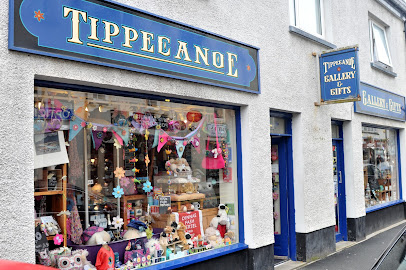
Cuillin Crafts
Explore Cuillin Crafts in Portree for unique Scottish gifts and handmade treasures that celebrate the artistry of the Isle of Skye.
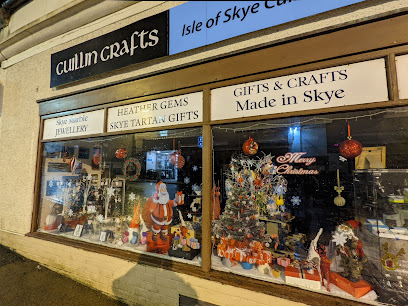
Isle of Skye Leather Co.
Explore Isle of Skye Leather Co., where exquisite craftsmanship meets the stunning landscapes of Scotland, offering unique leather goods and authentic souvenirs.
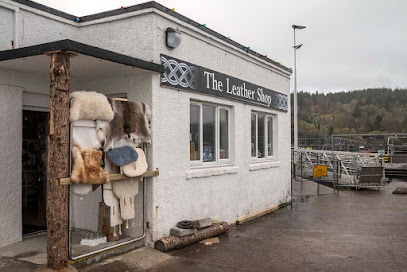
Carbost Community Shop
Experience the heart of Carbost at the Community Shop, where local flavors and friendly service await you on the Isle of Skye.
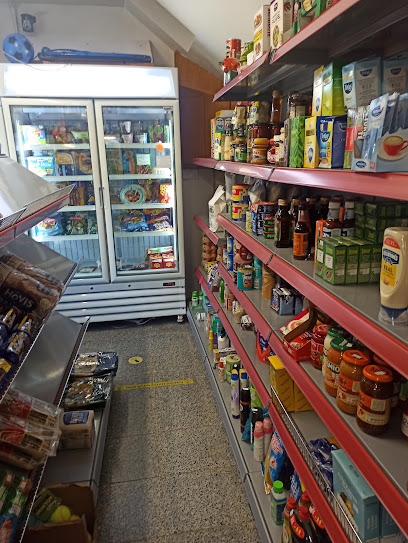
The Treasure Hut
Explore The Treasure Hut in Broadford for unique gifts and local crafts that embody the spirit of the Isle of Skye.
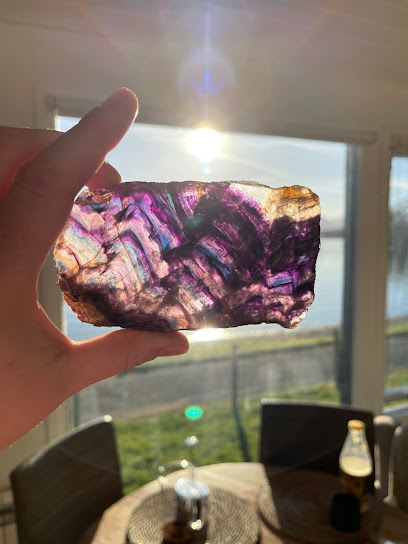
Floraidh Skye
Discover Floraidh Skye: A Clothing Shop where Local Artistry Meets Isle of Skye's Breathtaking Charm.
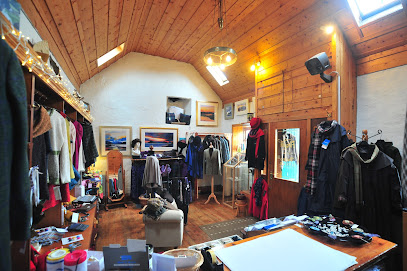
Kelpie Gallery & Gift Shop
Explore the Kelpie Gallery & Gift Shop on the Isle of Skye for unique local art and souvenirs that embody the spirit of Scotland.
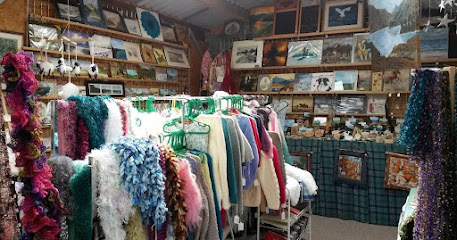
Essential bars & hidden hideouts
Cafe Sia & Siaway
Discover the flavors of the Isle of Skye at Cafe Sia & Siaway, where delicious pizzas, hearty breakfasts, and stunning views await every visitor.
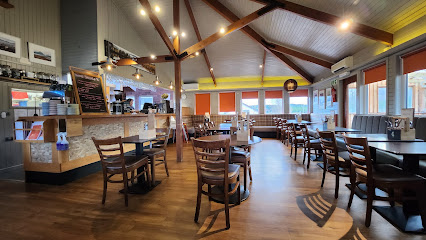
The Isles Inn
Discover the heart of Isle of Skye with hearty meals and local brews at The Isles Inn, a beloved pub in Portree's vibrant village atmosphere.

The Old Inn & Waterfront Bunkhouse
Experience the warmth of Scottish hospitality at The Old Inn & Waterfront Bunkhouse, your perfect retreat on the breathtaking Isle of Skye.

Old School Restaurant
Experience the best of Isle of Skye's seafood at Old School Restaurant, where culinary excellence meets local charm in Dunvegan.
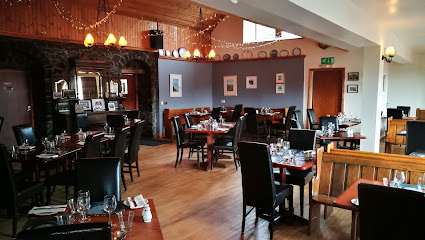
Seumas' Bar
Experience the best of Scottish cuisine at Seumas' Bar, nestled in the stunning landscapes of the Isle of Skye.
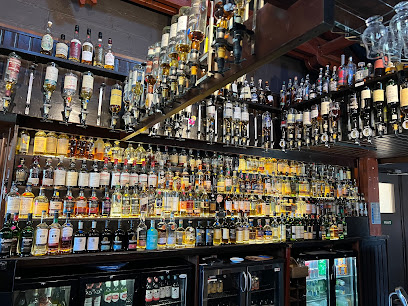
The Legend of Saucy Mary Restaurant
Experience the charm of British cuisine at The Legend of Saucy Mary, a must-visit bar and restaurant in the heart of Kyleakin, Isle of Skye.
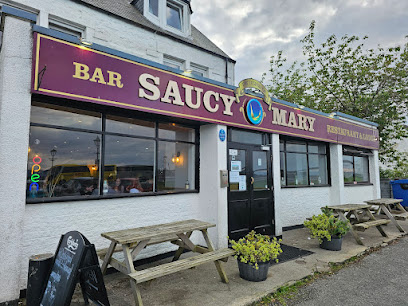
The Three Chimneys and The House Over-by
Experience the flavors of Scotland at The Three Chimneys, a celebrated restaurant and hotel on the Isle of Skye, where local ingredients shine.
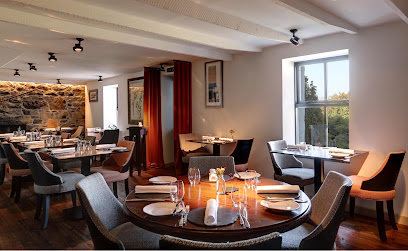
The Stein Inn
Discover the charm of The Stein Inn on the Isle of Skye, where history meets breathtaking views and delicious Scottish cuisine.
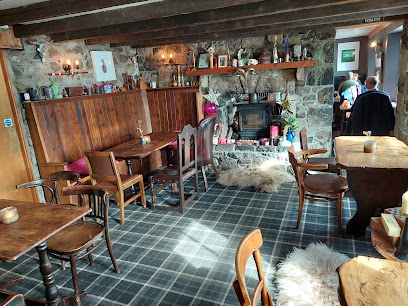
Antlers Bar and Grill
Experience the best of Scottish cuisine at Antlers Bar and Grill in Portree, where local flavors meet a welcoming atmosphere.
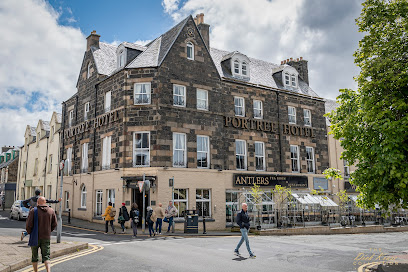
The Dunvegan, Isle of Skye
Experience the warmth of Scottish hospitality at The Dunvegan, your perfect dining and lodging spot on the Isle of Skye.
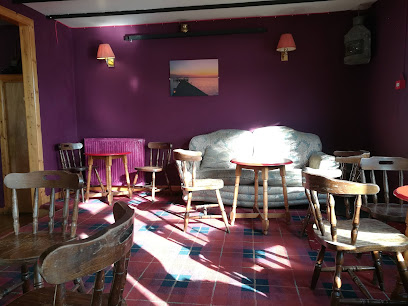
Merchant Bar
Discover the heart of Portree at Merchant Bar, where Scottish cuisine meets warm hospitality in a cozy atmosphere.
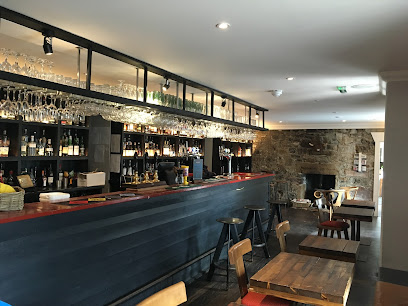
An Talla Mòr Eighteen Twenty
Discover Scottish hospitality and local flavors at An Talla Mòr Eighteen Twenty, a cozy pub in the heart of Portree, Isle of Skye.
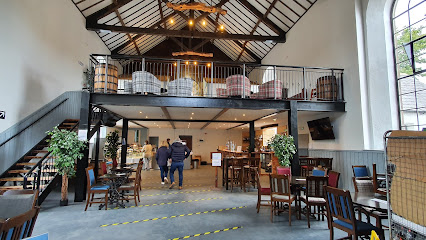
Bar Am Praban
Discover the flavors of Scotland at Bar Am Praban, the Isle of Skye's gem for local cuisine and breathtaking views.
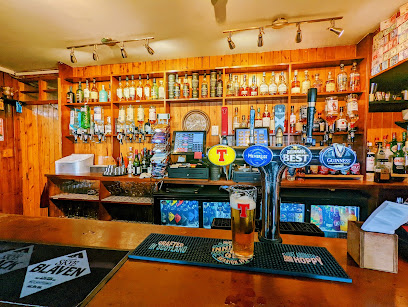
The Ferry Inn
Experience the charm of Uig at The Ferry Inn, where local flavors, stunning views, and warm hospitality await every traveler on the Isle of Skye.
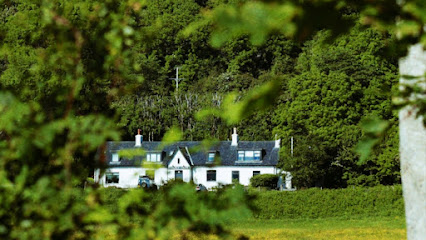
The King Haakon Bar
Discover the lively atmosphere and local flavors at The King Haakon Bar, a must-visit destination on the Isle of Skye for an authentic Scottish experience.
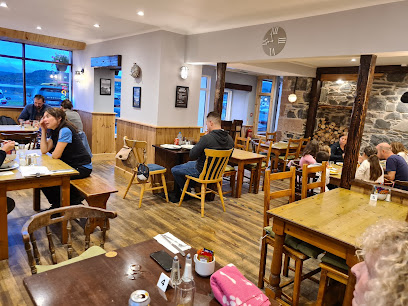
Local Phrases about Isle of Skye
-
- HelloHàlo
[HAH-loh] - GoodbyeTìoraidh
[CHEE-ree] - YesTha
[HAH] - NoCha
[KAH] - Please/You're welcomeMa 'se do thoil e
[mah sheh doh hoh-e] - Thank youTapadh leat
[TAH-puh let] - Excuse me/SorryTha mi duilich
[HAH mee DOO-likh] - How are you?Ciamar a tha thu?
[KYA-mar uh HAH hoo] - Fine. And you?Màth. Agus thu?
[mah AG-oos hoo] - Do you speak English?A bheil Gàidhlig agad?
[uh vayl GAH-lik ah-gut] - I don't understandChan eil mi 'tuigsinn
[kahn el mee TOO-ik-shin]
- HelloHàlo
-
- I'd like to see the menu, pleaseBu toil leam am bìdhach, ma 'se do thoil e
[boo toil luhm ahm BEE-ach, mah sheh doh hoh-e] - I don't eat meatChan ith mi feòil
[kahn ith mee FYOH-il] - Cheers!Slàinte mhath!
[SLAHN-chuh vah] - I would like to pay, pleaseBu toil leam ìoc, ma 'se do thoil e
[boo toil luhm EE-ok, mah sheh doh hoh-e]
- I'd like to see the menu, pleaseBu toil leam am bìdhach, ma 'se do thoil e
-
- Help!Cobhair!
[COH-vur] - Go away!Falbh air falbh!
[FAL-uh air FAL-uh] - Call the Police!Cuimhnich air na Poileas!
[KOO-in-eech air nuh POH-lus] - Call a doctor!Cuimhnich air dotair!
[KOO-in-eech air DOH-tuhr] - I'm lostTha mi air chall
[HAH mee air khahl] - I'm illTha mi tinn
[HAH mee teeng]
- Help!Cobhair!
-
- I'd like to buy...Bu toil leam a cheannach...
[boo toil luhm uh CHYAN-ukh] - I'm just lookingChan eil mi ach a' coimhead
[kahn el mee ach uh KOY-ut] - How much is it?Ciamar mór e?
[KYA-mar mohr eh] - That's too expensiveTha sin ro ghlan
[HAH shin roh glahn] - Can you lower the price?An urrainn dhut an t-sluaigh a ìsliuchadh?
[uhn OOR-in doot uhn SLOO-ee uh EE-slu-khuh]
- I'd like to buy...Bu toil leam a cheannach...
-
- What time is it?Dè an t-ùine a th' ann?
[jay un TOO-nyuh uh HAH-nuh] - It's one o'clockTha e aon uair
[HAH eh een OO-er] - Half past (10)Leath uair deug
[lyah OO-er jook] - MorningMadainn
[MAH-din] - AfternoonFeasgar
[FESS-gur] - EveningFeasgar
[FESS-gur] - YesterdayDè 'innse?
[jay IN-shuh] - TodayAn-diugh
[uhn JYOO] - TomorrowA-màireach
[uh-MAH-rukh] - 1Aon
[oon] - 2Dà
[dah] - 3Trì
[tree] - 4Ceithir
[KYE-heer] - 5Còig
[koyk] - 6Sia
[shee-uh] - 7Seachd
[SHACHK] - 8Ochd
[OHKHT] - 9Naoi
[NEE] - 10Deich
[JAYKH]
- What time is it?Dè an t-ùine a th' ann?
-
- Where's a/the...?Càite a bheil a'...?
[KAH-chuh uh vayl uh] - What's the address?Dè an seòladh?
[jay un SHOH-luh] - Can you show me (on the map)?An urrainn dhut mìneachadh dhomh (air a' mhapa)?
[uhn OOR-in doot MEE-nuh-khuh vuh-uh (air uh VUH-puh)] - When's the next (bus)?Cuin a thig an ath (bus)?
[KOO-in uh hig un ah (buhs)] - A ticket (to ....)Tichead (gu ....)
[TIK-yut (goo)]
- Where's a/the...?Càite a bheil a'...?
History of Isle of Skye
-
The Isle of Skye has been inhabited since the Mesolithic period, approximately 8,000 years ago. This is evidenced by archaeological finds such as the site at An Corran in Staffin, where tools and human remains have been discovered. The island is also home to numerous Neolithic sites, including chambered cairns like those at Rubh' an Dunain and the Fairy Glen, which offer a glimpse into the lives of early settlers.
-
During the 9th century, the Isle of Skye fell under the influence of Norse invaders. The Vikings left a significant mark on the island, from place names to archaeological remains. The village of Uig, for instance, is believed to have been a Viking stronghold. The Norse influence persisted until the 13th century when the Hebrides were ceded to the Kingdom of Scotland.
-
The Isle of Skye is famously associated with the clan system that dominated Scottish Highland life for centuries. Clan MacLeod, one of the most prominent Highland clans, has its ancestral seat at Dunvegan Castle on Skye. The castle, continuously inhabited for over 800 years, is a testament to the clan's enduring legacy and offers visitors a unique insight into the history and culture of the island's clans.
-
The Battle of Coire Na Creiche, which took place in 1601, was the last clan battle fought on the Isle of Skye. This battle between the MacLeods and the MacDonalds was fought in the Cuillin hills and marked the end of a long-standing feud between the two clans. The aftermath of the battle saw significant changes in clan dynamics and territorial control on the island.
-
The Isle of Skye played a notable role during the Jacobite Rebellions of the 18th century. Flora MacDonald, a native of the island, famously helped Bonnie Prince Charlie evade capture after the Battle of Culloden in 1746. Disguised as her maid, the prince was transported from the Outer Hebrides to Skye and eventually to safety. Flora MacDonald's bravery and loyalty have become legendary, and her story is deeply interwoven with the island's history.
-
The 18th and 19th centuries were marked by the Highland Clearances, a tragic period during which many inhabitants of the Isle of Skye were forcibly evicted from their homes to make way for sheep farming. The Clearances led to significant emigration, with many Skye residents relocating to countries like Canada, Australia, and the United States. The abandoned villages and ruins scattered across the island serve as poignant reminders of this turbulent time.
-
In recent decades, the Isle of Skye has experienced a cultural revival, with efforts to preserve and promote its rich Gaelic heritage. The island is a hub for traditional music, Gaelic language, and folklore. Annual events like the Skye Festival (also known as Fèis an Eilein) celebrate the island's unique culture. Today, Skye attracts visitors from around the world who come to explore its stunning landscapes, historical sites, and vibrant cultural scene.
Isle of Skye Essentials
-
The Isle of Skye is located off the west coast of Scotland. The nearest international airport is Inverness Airport, approximately 150 kilometers away. From Inverness, you can rent a car or take a bus to Skye. Alternatively, you can drive from Glasgow or Edinburgh, which takes around 5 to 6 hours. The Skye Bridge connects the mainland to the island, making it easily accessible by car. There are also ferry services from Mallaig to Armadale on the Isle of Skye.
-
Getting around the Isle of Skye is best done by car due to the island's rural nature and scenic routes. Car rentals are available in Inverness, Glasgow, and Edinburgh. Public buses operate on the island, connecting major towns and tourist spots, but they may be infrequent. Cycling is also a popular option for exploring the island's picturesque landscapes. Taxis are available but can be costly for long distances.
-
The official currency in the United Kingdom is the British Pound (GBP). Credit and debit cards are widely accepted across the Isle of Skye, including in hotels, restaurants, and shops. However, it is advisable to carry some cash, especially when visiting remote areas and smaller establishments. ATMs are available in larger towns such as Portree and Broadford.
-
The Isle of Skye is generally a very safe destination for tourists. Crime rates are low, and violent crimes are rare. However, it is always prudent to take standard precautions such as keeping an eye on your belongings and avoiding isolated areas at night. There are no specific high-crime areas targeting tourists on the Isle of Skye.
-
In case of an emergency, dial 999 for immediate assistance from police, fire, or medical services. The main hospital on the island is the Dr MacKinnon Memorial Hospital in Broadford, which provides emergency medical services. It is advisable to have travel insurance that covers medical emergencies. For minor health issues, there are pharmacies in towns like Portree and Broadford where you can purchase over-the-counter medications.
-
Fashion: Do dress in layers and be prepared for changing weather conditions. Waterproof clothing and sturdy walking shoes are recommended. Religion: Do respect local customs and traditions, especially when visiting historical or religious sites. Public Transport: Do be punctual when using public buses, as they may not wait for late passengers. Don't expect frequent service in remote areas. Greetings: Do greet people politely; a simple 'hello' or 'good day' is sufficient. Eating & Drinking: Do try local specialties such as fresh seafood and haggis. Don't forget to make reservations in popular restaurants, especially during peak tourist seasons.
-
To experience the Isle of Skye like a local, consider visiting during the shoulder seasons of spring and autumn when the weather is still pleasant, and the island is less crowded. Explore lesser-known spots such as the Fairy Pools, the Quiraing, and Neist Point for breathtaking views. Engage with locals in community events or local markets to learn more about the island's culture and traditions. Don't miss the opportunity to sample local whiskies at the Talisker Distillery.
Trending Landmarks in Isle of Skye
-
Dunvegan Castle & Gardens
-
Sligachan Old Bridge
-
Neist Point Lighthouse
-
Armadale Castle, Gardens & Museum
-
The Lump
-
Rubha Hunish
-
Neist Point Cliff Lighthouse Viewpoint
-
The Brother's Point
-
Dunscaith Castle
-
St. Columba's Isle
-
Old Ruins
-
Clachan Erisco Standing stones, Borve, Isle of Skye
-
Dun Osdale
-
Ardmore Arches
-
Kylerhea Minor Lighthouse
Nearby Cities to Isle of Skye
-
Things To Do in Stirling
-
Things To Do in Glasgow
-
Things To Do in Dundee
-
Things To Do in Edinburgh
-
Things To Do in Aberdeen
-
Things To Do in Derry
-
Things To Do in Belfast
-
Things To Do in Ramsey
-
Things To Do in Kirk Michael
-
Things To Do in Peel
-
Things To Do in Laxey
-
Things To Do in Onchan
-
Things To Do in Sligo
-
Things To Do in Douglas
-
Things To Do in Port Erin













